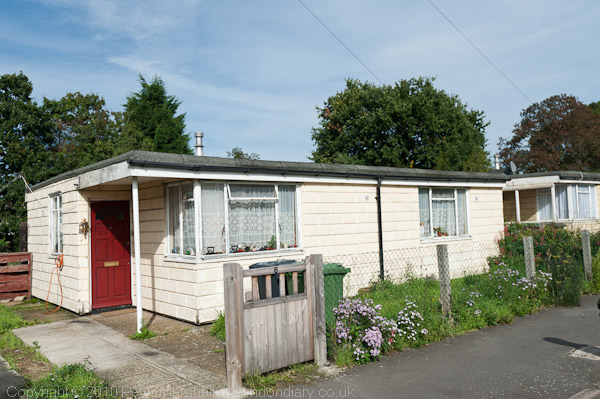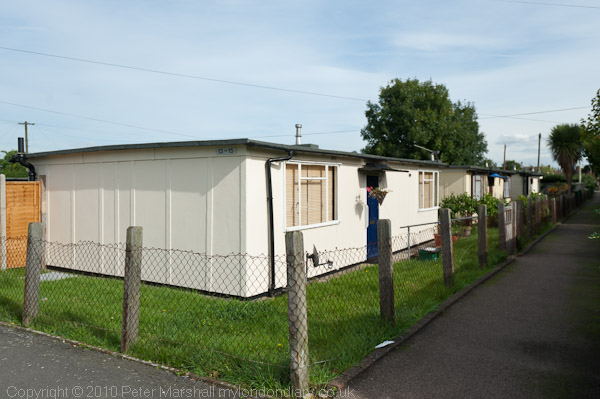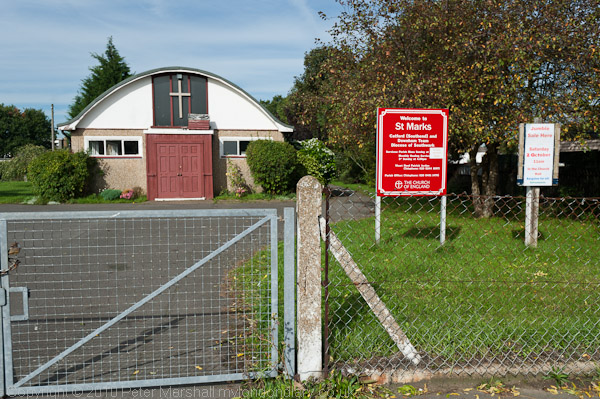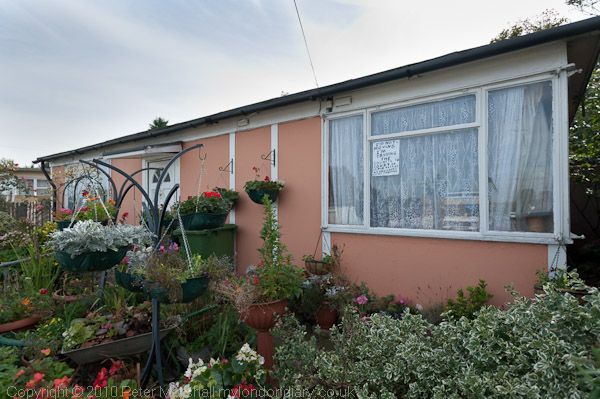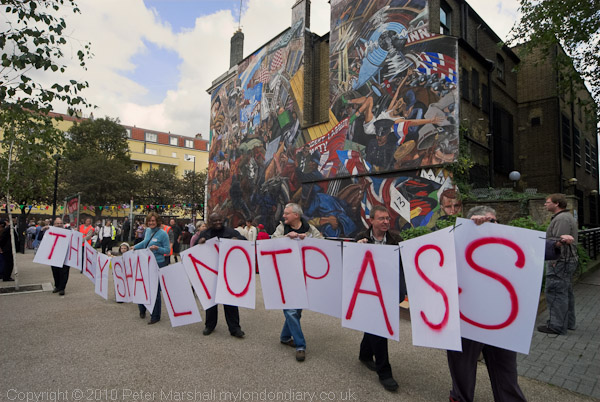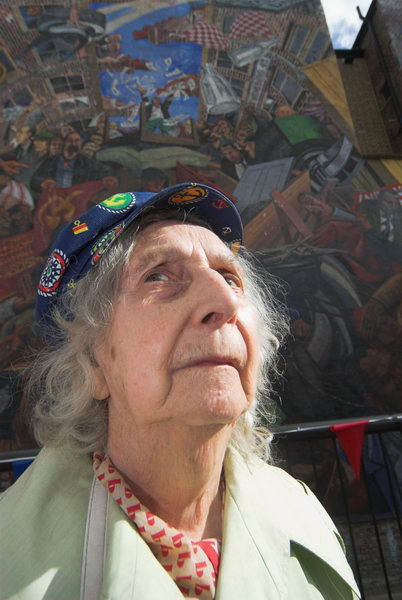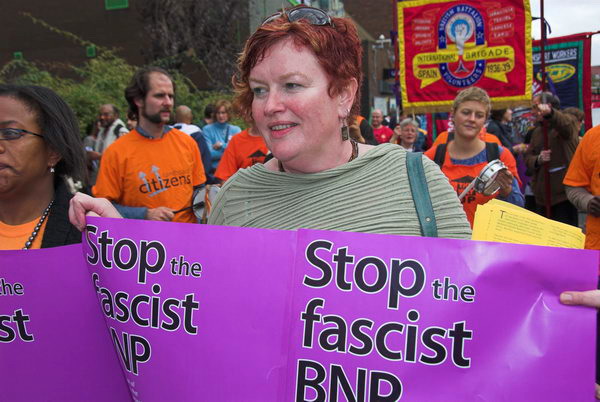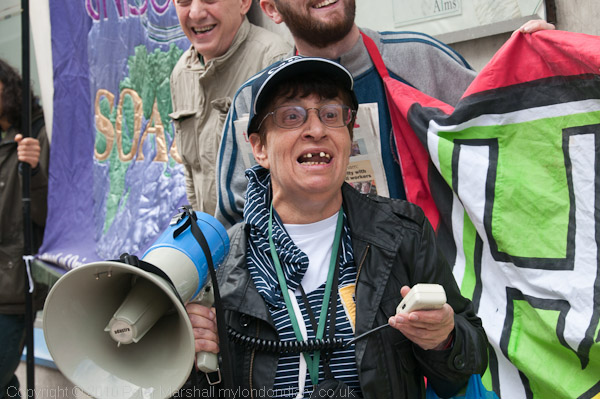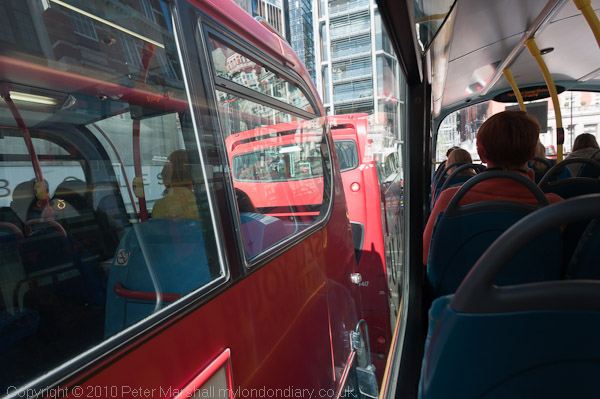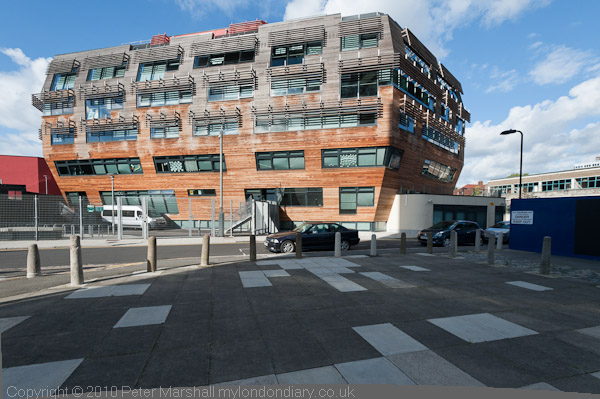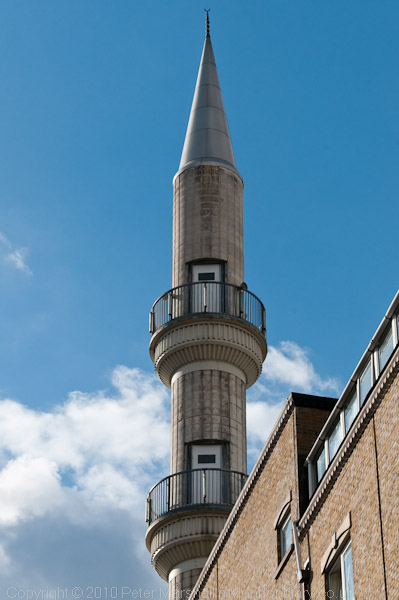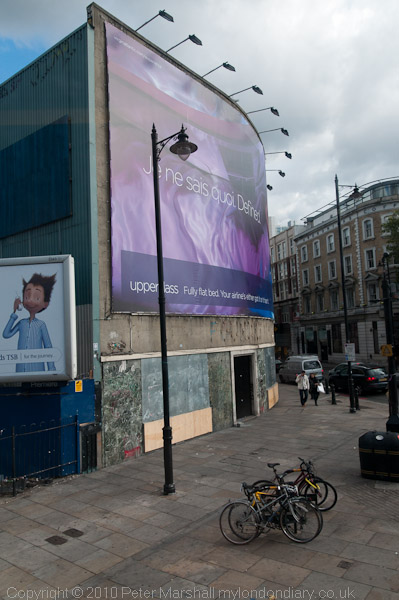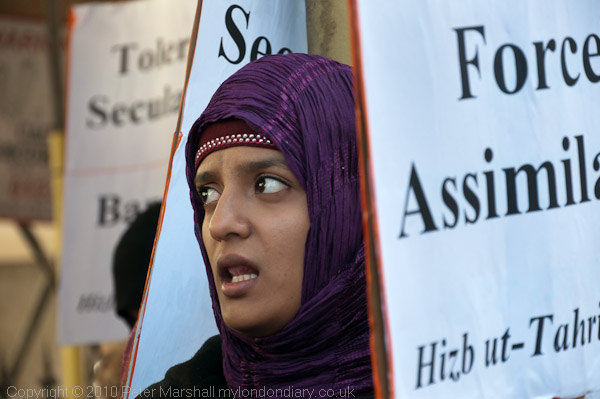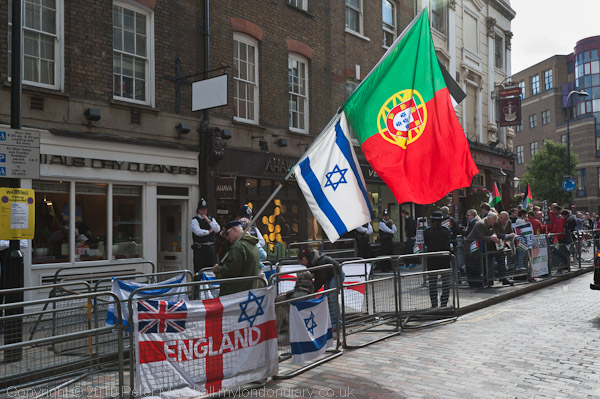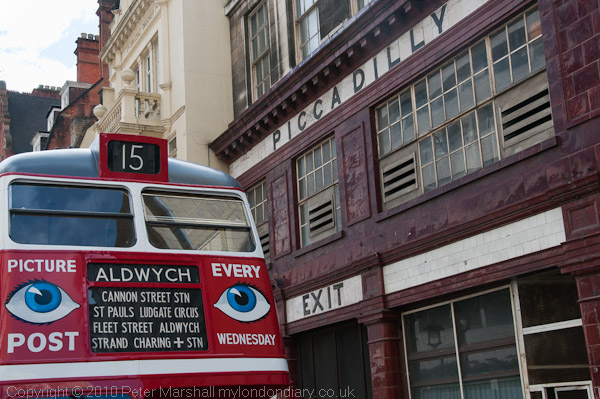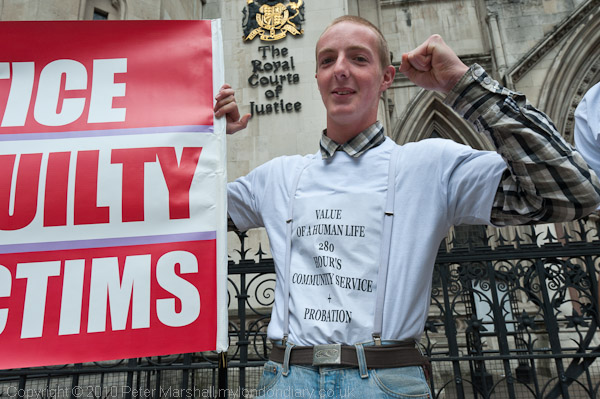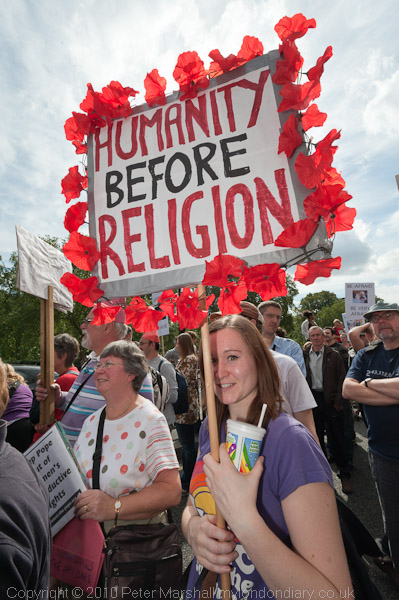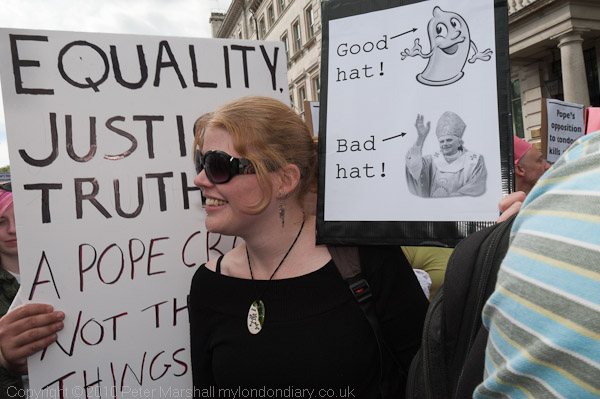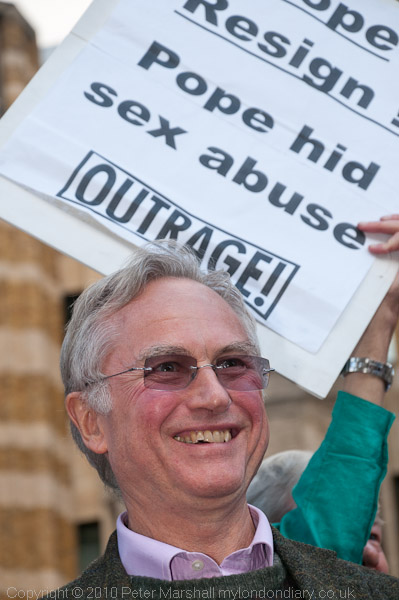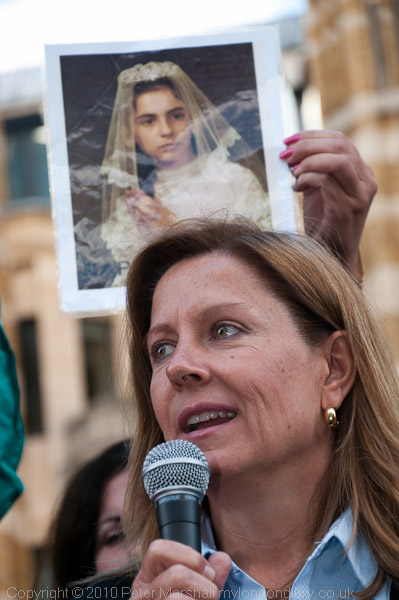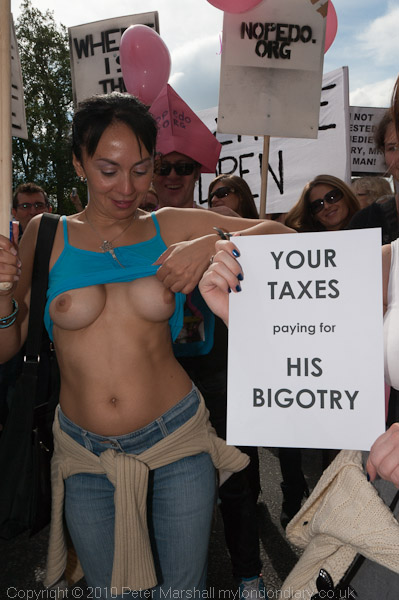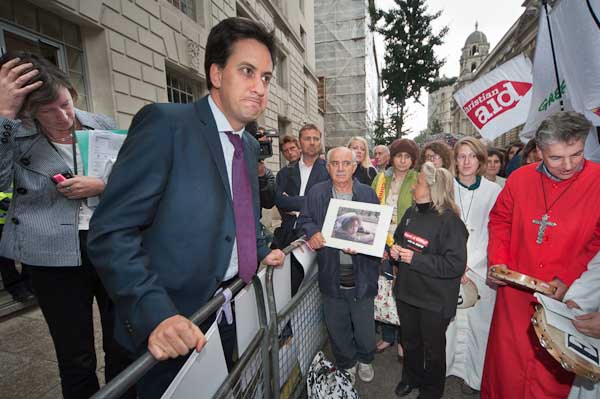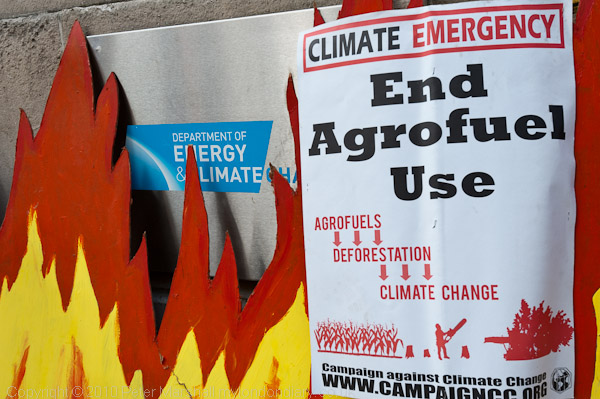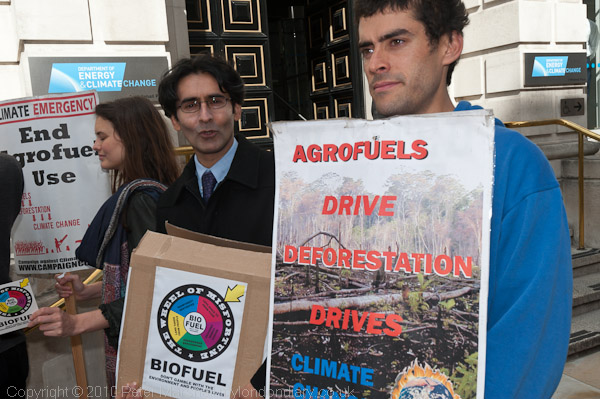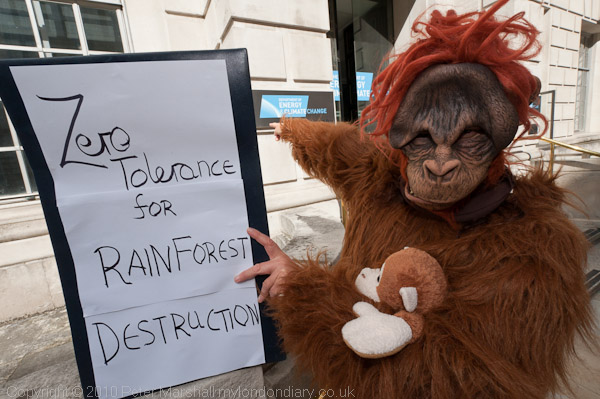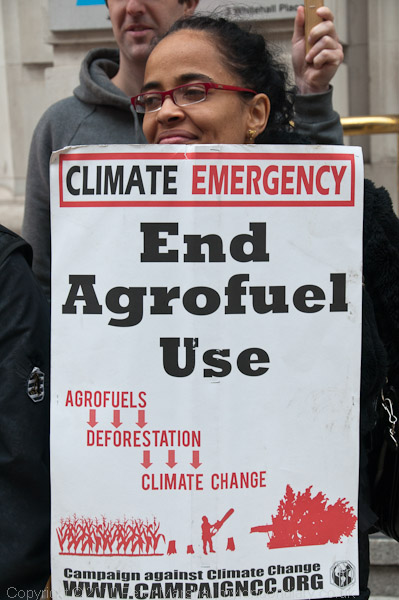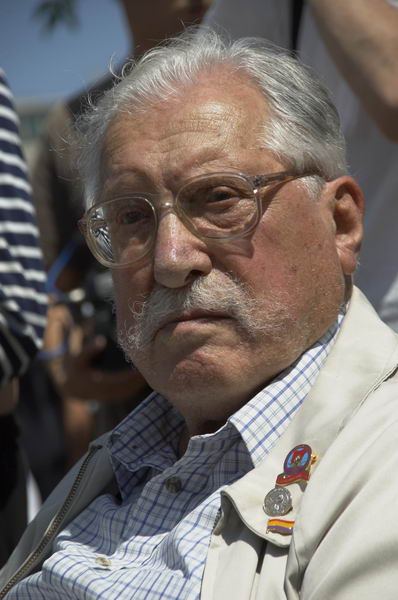
Sam Lesser, 2005
In the print edition of The Guardian on Saturday I read with sadness of the death of Sam Lesser, one of the few remaining veterans of the International Brigade that fought against fascism in Spain. It was a very short note and I hope they will publish a proper obituary at some point. Spain was important, not just for the left but for all of us, and the Sam Lesser was one of the more than 30,000 volunteers who went to fight for freedom – and around a third of them gave their lives there. He survived and continued through his life to follow his beliefs and work towards a better world.
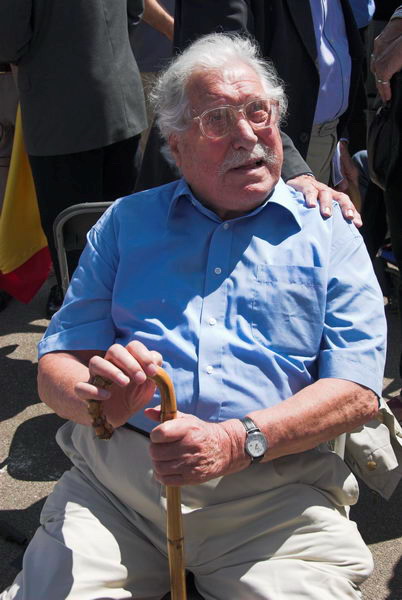
Sam Lesser, 2006
I’d photographed him a number of times, and was impressed by his speeches, although I wasn’t present at the Spanish Embassy last year where along with the other seven then surviving British and Irish volunteers he was at last honoured by the Spanish Government by being made a Spanish citizen. According to the Morning Star obituary, his “emotional anti-fascist speech” in “fluent Spanish” on that occasion reduced some of the embassy staff to tears. Characteristically it linked the struggles of his youth to the current day fight against fascism here and the rise of the BNP.
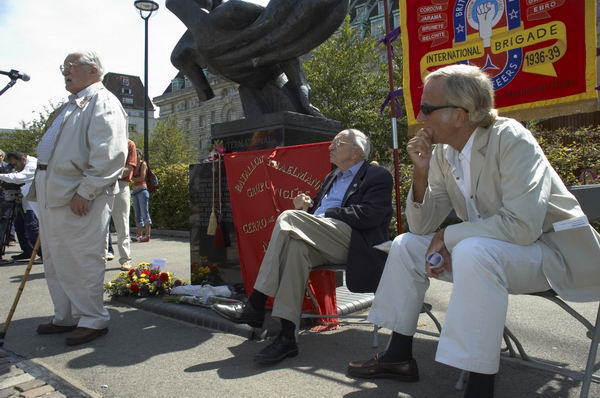
Sam Lesser speaks, watched by Jack Jones and John Pilger, 2005
Lesser took part in the fierce fighting at the University of Madrid shortly after arriving in Spain in 1936 which killed 24 of the first 30 British volunteers, but was wounded in a battle in January 1937. Hit by bullets from both sides, he was left overnight dying on the battlefield but saved by a comrade who insisted on going back to look for him the following day). After a period in a Spanish hospital he was sent back to England for treatment. He returned to Spain hoping to fight again but failed his medical and instead made radio broadcasts for the Republicans and worked as a journalist for the Daily Worker, escaping to France as the Republicans were finally defeated. You can read more in an interview with Angeles Rodenas which the Socialist Worker published four years ago, and you can hear him speaking in English as a part of the programme ‘Witness‘ broadcast on the World Service of the BBC.
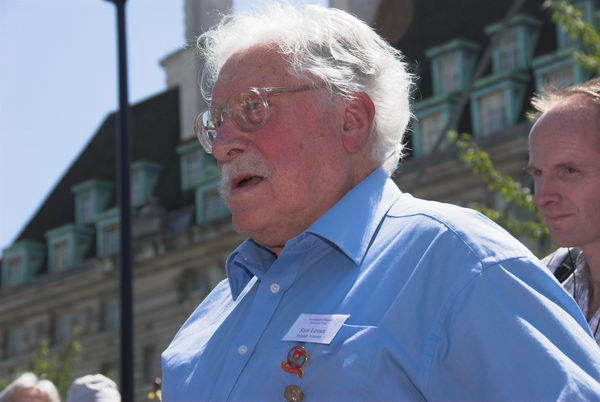
Sam Lesser, 2006
During the Second World War he was again turned down for military service because of his wounds and he worked as an inspector in an aircraft factory. After the war he returned to journalism with the Daily Worker, the communist party newspaper, which sent him to many scenes of post-war conflicts. His experiences working in the Soviet Union and reporting on the Soviet invasions to crush the popular movements in Hungary and Czechoslovakia destroyed his faith in communism and he moved increasingly towards social democracy, even becoming a strong supporter of New Labour.
Lesser, who worked as a journalist under the name of Sam Russell, was in Cuba for the missile crisis, and spent a night with Che Guevara at the height of it (his interview was heavily censored by the Daily Worker, removing all Che’s more controversial war-like rhetoric) and he also reported for them on the Vietnam war. As a student I read many of his reports in the Morning Star (the Daily Worker was relaunched under this title in 1966), which often presented a rather more accurate overview of events at a time when much of the media was over-saturated by cold war rhetoric and US propaganda.
The Morning Star obituary also tells the story of his visit to Chile in 1973, where he arrived for a fraternal visit the day before the CIA-backed coup and was woken up early the following morning by the gunfire. His fluent Spanish (he learnt it while in a Spanish hospital bed) enabled him to pose as a Spanish engineer and move into the Santiago Hilton, later relaying his report to the Morning Star, where it made the front page with the headline “I Saw Democracy Murdered.”
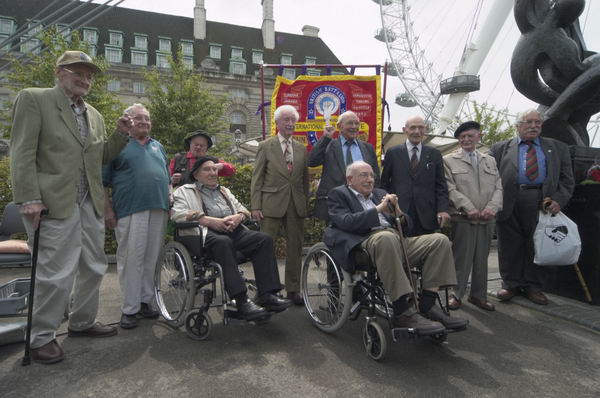
Sam Lesser at the extreme right of 9 veterans of the Spanish Civil War , 2004
Sam Lesser was a founder of the International Brigade Memorial Trust which holds an annual commemoration every July at the memorial in Jubilee Gardens on the South Bank, at which the pictures here were taken. In 2009 he gave a spirited address there in front of the Spanish Ambassador, a month after he and the other veterans had been given their Spanish passports.
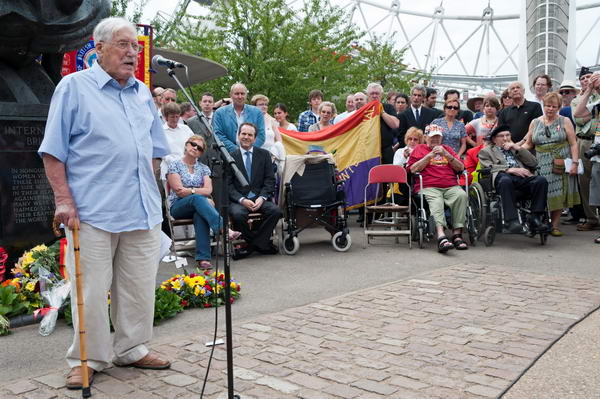
Sam Lesser speaking at the IBMT commemoration, 2009
